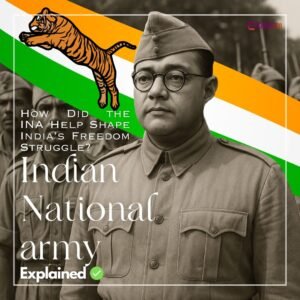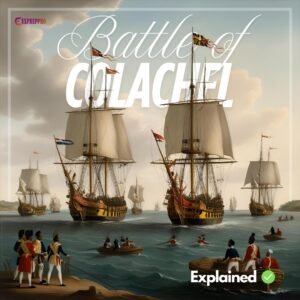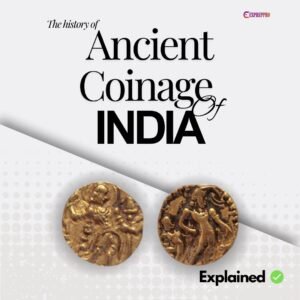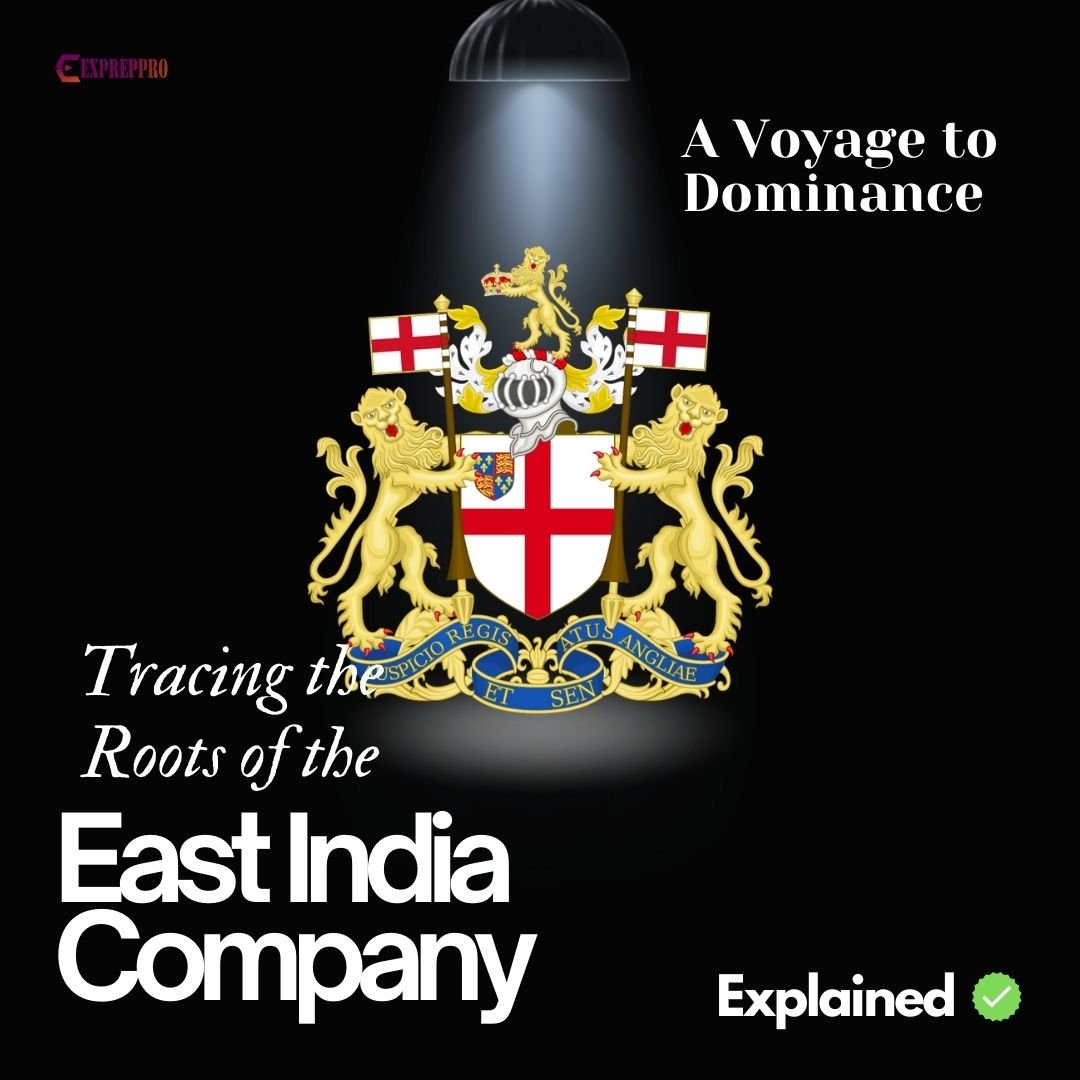
English East India Company was an English venture started by a group of English merchants based in London to trade with the east in 1600. This joint stock company initiated the expansion of British imperialism to the east.
The Begining Of English Company
At first, England had a Levant company, and this company brought spices from the East. They brought spices, silks and other goods from traders through overland Middle East or Levant routes.
The traditional routes passed through the dominions of the Sultan of Turkey or Türkiye. Queen Elizabeth granted a charter in 1581 to the Levant Company to trade with the Middle East under the terms of the Turkish sultan’s concessions in 1579. These privileges include Turkish civil and criminal jurisdiction exceptions and safe residence and trade permits.
Later, in 1592, they got a fresh charter allowing them to trade with India through Turkish territories. This overland route was expensive and depended on geopolitics. Moreover, the invention of a sea route by crossing the Cape of Good Hope offered a cost-effective and more profitable trade route to Portugal and Spain.
Drake’s voyage around the world in A.D 1580 and the English victory over the Spanish Navy or Armada gave them the energy to make voyages to the east and trade with eastern regions.
Beginning of Trade With India
The first English man to reach India was Thomas Stephens. He came to Goa in 1579. In 1583, two Englishmen, Fitch and Newbery, reached India. Interestingly, both used the overland route to reach their destination. In 1599, an English merchant adventurer, John Mildenhall, came to India using an overland route and secured some privileges from the Mughal emperor Akbar.
Initial Days Of English East India Company
On December 31, 1600, Queen Elizabeth granted a charter to the Governor and Company of Merchants of London Trading into the East Indies to freely trade and traffic into and from the East Indies, including India or any of them beyond the Cape of Good Hope to the Straight of Magellan.
The right was granted for fifteen years. The right might be reassessed if the trade did not become profitable. Otherwise, a renewal of fifteen years was contemplated. In 1698, a new rival company called the English Company, which intended to trade with the East Indies, was formed. Both old and new companies merged in 1709 to become the United Company of Merchants of England trading to the East Indies. This company was usually known as the English East India Company. Interestingly, in official records, the company was also called the Honorable East India Company or the Company Bahadur.
Early Voyages Of English East India Company
The first ships of the East India Company left England in 1601 in search of Eastern spice markets. They comprised four ships under James Lancaster and his ship, Red Dragon. English ships sailed to Sumatra and then to Bantam in Java (now in Indonesia). There, he started a factory to collect spices.
Even though the first voyage was not violent, the English captured a Portuguese ship full of cotton. Lancaster returned to England in 1603 with valuable commodities.
The first journey gave English a clear picture of trade and its related problems.
- Portugal had naval supremacy in high seas. They compiled other ships to buy a licence called Cartaz and forced ships to use their Portuguese-controlled ports. This gave them supremacy in collecting customs duties. The situation is otherwise known as the “vast protection racket” because the Portuguese were protecting merchants from Portuguese violence.
- Dutch East India Company was trying to increase their power in the East.
The Second Voyage
The second voyage was delayed due to plague in 1603. In 1604, a ship under Henry Middleton sailed to Malaca and Bantam to get spices.
The English ships reached Surat to purchase cotton textiles and goods in 1608. In the same year, they tried to establish a factory. Captain Hawkins disembarked at Surat and visited Mughal emperor Jahangir at Agra but failed to obtain permission for a factory.
In 1612, Middleton reached Swally near Surat. In 1612, the company’s fleet defeated the Portuguese fleet off Swally. This was the beginning of their power expansion. Thomas Best, commander of the tenth voyage consisting of Dragon and Hoisander, was responsible for this defeat.
First English Factory In India
Thomas Aldworth secured a grant from Jahangir and established the first factory at Surat.
Sir Thomas went to Jahangir to procure a treaty, but it failed. However, he obtained permission to establish factories in certain towns in the Mughal territory.
On the south coast, the East India Company opened a Factory at Masulipatanam in 1611 with the permission of the Golconda Sultan on payment of 500 pagodas. In 1625 British established a factory at Armagon in 1625. Aramagon was near the Pulicut Dutch settlement.
In 1640, Francis Day acquired Madras (now Chennai) from a local Raja of Chandragiri, a representative of the Vijayanagara empire and built Fort St.George. Thus, Madras became the first piece of territory acquired by the English or English east India Company in India. They got this land through negotiation and not by using force. In 1642, Fort St.George displaced Mauslipatanam as the chief settlement on the east or Coromandel coast.
Along with Fort St.George, the English East India Company divided towns into black and white towns. This division was to protect their interests.
Madras was not a natural harbor, so ships could not dock at the port; instead, they anchored off the coast in what was known as the roads. Catamarans would then come from land to transport goods and people to and from the ships.
How British Got Bombay?
Due to many reasons, the company’s trade was not very flattering during the first half of the seventeenth century. This created problems in England, too. But the period between 1660-1680 was considered as its golden age. Its stock prices increased, and dividends paid during these years averaged 25 per cent annually. The charter also gave them more power, like minting coins.
In 1661, English king Charles II received the island of Bombay as part of a dowry or political Settlement to his marriage with Portuguese princess Catherine of Braganza. Bombay was a group of seven islands, and Charles II failed to asses its strategic value. He was unwilling to spend money to manage it. So, King Charles II allowed the company in 1668 to take over its administration of the town and a fort called “Bombay Castle” for an annual payment of 10 pounds.
Bombay gradually gained prominence during the administration of Sir George Oxenden, Gerald Aungier and John Child. In 1664 and 1670, Maratha power sacked the city of Surat, which affected the company’s trade. The continuous interference of Mughal proxies also created trouble for the company.
These reasons forced the company to transfer its presidency headquarters from Surat to Bombay in 1687.
English East India Company Factories In India
In 1633, the company opened factories at Hariharpur and Balasore. In 1650, Gabriel Boughton, a physician with Mughal subedar, secured permission for a company to trade, and the company opened a factory at Hughli in 1651. Later, they opened their factories in Patna, Kasmbazar, and Rajmahal.
Due to the distance from Madras, the settlements in Bihar, Bengal and Orrisa were brought under Fort St.George in 1658.
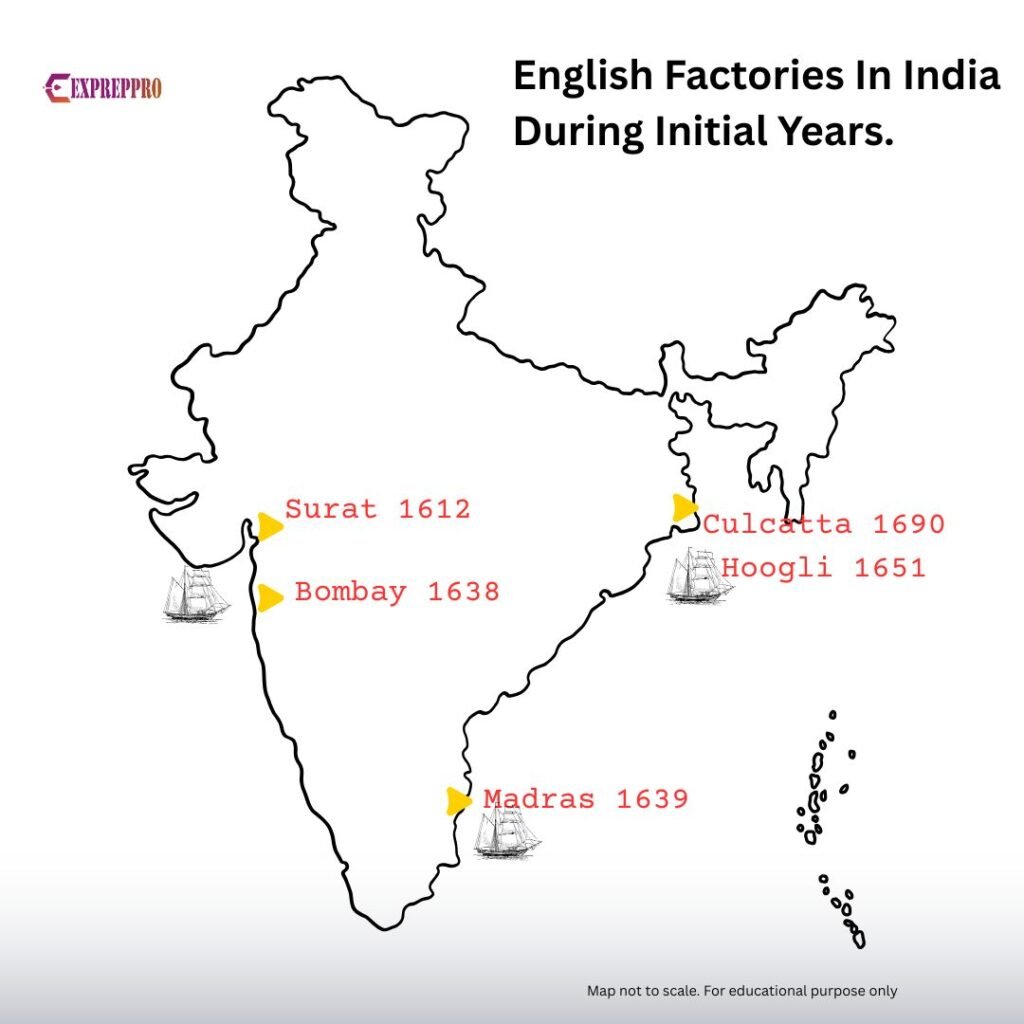
Reasons for The Initial Dutch Dominance In India
Dutch got the dominance of spice trade in India over other powers. Portugal lacked human resources, and the Portuguese’s internal corruption helped the Dutch achieve it. Moreover, Portugal showed more interest in Latin American colonies.
The United East India Company, Verenigde Oost-Indische Compagnie or VOC, was started with strong financial support. The ships of VOC were powerful enough to create a threat in the high seas.
The VOC raised 550000 pounds to fund its mission, but East India Company raised 68373 pounds for its maiden mission.
On average, the VOC sent seven ships to Asia for every three sent by the English company.
In 1759, the Dutch suffered defeat at the hands of the English in Bengal. They started to concentrate in the East Indies or Indonesia. So, the Dutch never maintained a strong force in India to defend other European powers. Later, the Dutch interest decreased and ceased to exercise influence in Indian affairs.
Journey From Regulated Company to Joint-Stock Company
The English East India Company was initially constituted as a simple regulated company. In this case, company members were subjected to certain regulations and enjoyed some privileges but traded on their own capital.
If explained in simple terms, in the early days of English, the East India Company acted like a syndicate with a concession for the Indian trade. They worked by constituting small groups among members, and these groups gave the capital for each separate voyage. The liability of the group was limited to the prescribed voyage.
To overcome the funding difficulties, the subscribers opted for a joint stock in 1612 but not on a permanent basis. They founded the joint stock for a series of voyages only, but later, it became a full joint-stock company.
Membership Of English East India Company
- According to the charter, the membership of the English East India Company was given to those who had purchased a share in its first and later voyages. However, the contribution amount required to buy shares varied from time to time.
- The sons of members could also claim membership upon attaining the age of twenty-one.
- Membership can be acquired through service or apprenticeship and payment of an admission amount.
- It can be issued on payment of a fixed amount.
- Membership can be conferred on distinguished individuals who were likely to be able to aid the company.
Structure Of English East India Company
An annually elected governor and twenty-four committees held the company’s control. These committees were the precursor of directors. They have to supervise and govern the company’s voyages and general affairs. The governor and directors took all necessary decisions. If needed, the company organised a general meeting for all of its members.
Next to the directors, the deputy governor, secretary, and treasurer were there.
In India, each settlement (for example, Madras) had a chief and six councillors to help him in administration. Then next comes Senior Merchants, Junior Merchants, factor, and Writers. The annual salary of company servants ranges from 500 pounds for a governor and 5 pounds for a writer.
Apart from these, there will be staff surgeons, judges, ministers, essay masters, attorney generals, scavengers, and secretaries for extraordinary services.
The company followed this without changes until changes were introduced in the 1770s.
Troubles With Mughal Power
The company wanted to treat them like sovereign power, but the Mughals rejected it. This started troubles in Bengal, Chittagong, Surat, and even in Bombay. The situation worsened when John Child captured a convoy of ships carrying grain to Sidi Yakut Khan, an ally of the Mughals and local chief. In retaliation, Yakut Khan besieged the Bombay fort.
At last, peace came when Aurangzeb issued a Farman in 1690 that allowed the English to carry the trade under certain conditions, paying a fine for the losses that occurred.
Attingal Riot or Attingal Outbreak of 1721
English East India Company opened a factory at Anjengo or Anchuthengu with the permission of Rani of Attingal( The Sister of Travancore or Venad Raja holds the title of Rani of Attingal. Technically, it was an estate comprised of 15000 acres of land covering seven villages, but Rani had the power to control its affairs).
Due to corrupt practices of factors under the chief factor, Gyfford local people turned against them and Fort Anjengo. In 1721, the ruler’s agents demanded that the usual presents due to the rani be delivered to them for transmission to her. But chief factor Gyfford rejected it and, with a contingent of 140 Englishmen, moved to Attingal to hand over the presents to Rani in person. This show of strength provoked the local inhabitants. They attacked the marching contingent and killed all. Then, the rebels besieged the fort for six months, which ended when the reinforcements arrived.
The Anjengo revolt is important in the sense that it was the first organised revolt by the people against the East India Company.
Export Commodities Of Company
Apart from spices like pepper, the company collected Calico. Calico was the common name for cotton cloth during the seventeenth and early eighteenth centuries. Each region in India produced its own Calico. For example, Surat was known for Baftas, and the Coromandel Coast produced pintadoes. Chintzes were another type of cotton cloth. Large chintzes that were used as curtains and bedspreads were called palampores. Bengal was well known for high-quality muslin.
Apart from bullion for trade, the company imported ice cubes from northern Europe for use in Whiskeys. This ice was the only major import item to India during its initial phase. Later, the company started to import processed products from London.

